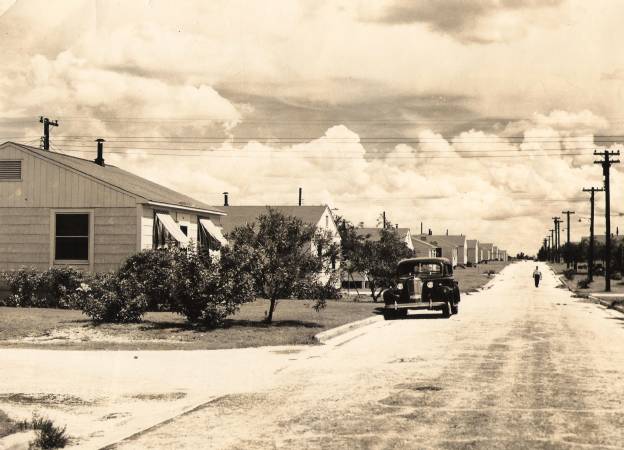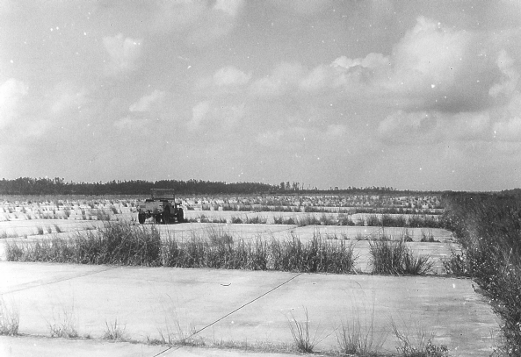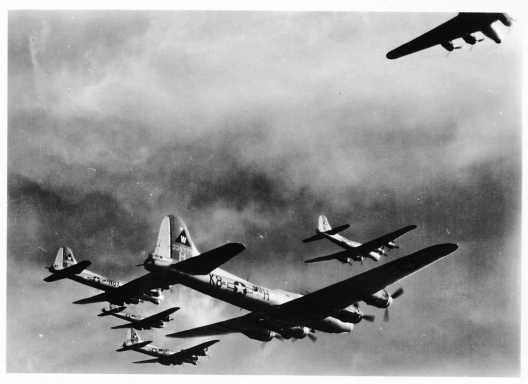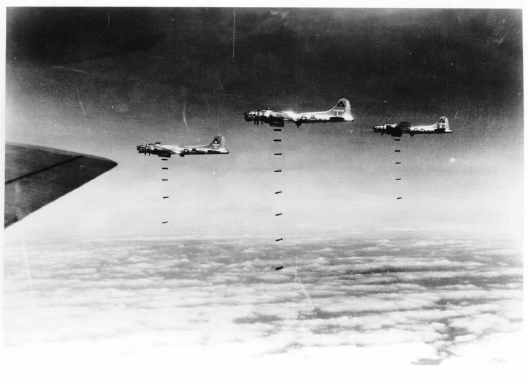Allen Altvater
Main menu
- Home Page
-
Allen C. Altvater
- Allen C. Altvater
- Circle Theater
- Papa's Multigraph
- Family Photo Gallery
- 73rd USN Seabees - WW II
-
Altvater Genealogy
- Altvater Genealogy
- Parents of Allen Sr.
- Grandparents of Allen Sr.
- Kretschman Genealogy
- Warvel Genealogy
- Estes Genealogy
- Price Genealogy
- Moyer Genealogy
- Ingle Genealogy
- Allen C. Altvater, Jr.
- About Being Fired
- My Resume'
- Life Accomplishments
-
Altvater Library
- Sebring Fire Department
- Civilian Conservation Corp
- Highlands Hammock
-
Sebring Air Terminal
- Sebring Air Terminal
- About the Author
- Foreword
- Chapter 1 - The Origin of Hendricks Field
- Chapter 2 - No Army Camp for Sebring
- Chapter 3 - Early History of Hendricks Field
- Chapter 4 - Hendricks Field 1941-1945
- Chapter 5 - Hendricks Field
- Chapter 6 - Hendricks Field After the War
- Chapter 7 - The Eighth Air Depot, Inc.
- Chapter 8 - Ghosts of WW II Planes Still Roar
- Chapter 9 - Congressman J. Hardin Peterson
- Chapter 10 - Historical Documents, Letters, Telegrams, etc.
- Chapter 11 - The Race
- Chapter 12 - The Races
- Chapter 13 - Reports and Memorandums
- Chapter 14 - 12 Hour Grand Prix
- Maps
- Additional Documents
- SAT - After the War
- The Races
- The Fifty Years of Sebring
- The Seventy-Five Years of Sebring
- The One-Hundred Years of Sebring - Excerpts
- Major Thomas B. McGuire, Jr.
- Selected Excerpts
- 1949 Hendricks Field Brochure
-
Allen C. Altvater, III
- Allen C. Altvater, III
- High School Reunions
- Our Church
- HCSO - Sheriff Chaplaincy
- Sebring's Centennial Celebration
- World Changers
- Historical Society
- Sebring Air Terminal
- About the Author
- Foreword
- Chapter 1 - The Origin of Hendricks Field
- Chapter 2 - No Army Camp for Sebring
- Chapter 3 - Early History of Hendricks Field
- Chapter 4 - Hendricks Field 1941-1945
- Chapter 5 - Hendricks Field
- Chapter 6 - Hendricks Field After the War
- Chapter 7 - The Eighth Air Depot, Inc.
- Chapter 8 - Ghosts of WW II Planes Still Roar
- Chapter 9 - Congressman J. Hardin Peterson
- Chapter 10 - Historical Documents, Letters, Telegrams, etc.
- Chapter 11 - The Race
- Chapter 12 - The Races
- Chapter 13 - Reports and Memorandums
- Chapter 14 - 12 Hour Grand Prix
- Maps
- Additional Documents
Chapter 4 - Hendricks Field 1941-1945
HENDRICKS FIELD 1941-
The selection of Highlands County as the site for a gigantic war training facility changed the entire life pattern for Sebring and most of its citizens. The entire nation was just beginning to recover from the effects of the national depression and the government was in the process of dismantling some of the programs designed to alleviate the unemployment conditions. In Sebring, the Works Progress Administration (WPA) projects were being curtailed and the Civilian Conservation Corps (CCC) had been reduced to a 40 man “side camp” operated out of the Sarasota area.
But, although quite a few individuals had suffered intensely because of the depression the City was in a remarkably good economic condition, particularly as compared to other municipalities. When construction of Hendricks Field was started, all the favorable predictions of the Sebring American were fulfilled-
The announcements of the site selection and the award of the contract for construction, were practically concurrent for, on July 9, 1941, Cleary Brothers (a Florida East Coast firm) began work on a contract involving $5,896,655.00. To expedite movement of materials, the first efforts were made toward building a rail spur into the area. This was accomplished by early September and by that time, a power line had been built from Sebring and work was being pushed to complete permanent access roads for the better movement of workmen and supplies.
Any man with a saw, hammer and square was hired immediately, with or without references or experience. And the wages were fabulous: $1.00 an hour for journeymen and 50 cents for apprentices! The trade unions (for the first time in Sebring history) were in control of all hiring as the project was on a “closed shop” basis. A nonunion man signed for membership at the time he was employed and, if he did not have the $50.00 affiliation fee (which most did not) he could assign a weekly deduction of $5.00 from his pay until $60.00 was paid in. If, at the end of the 12 weeks, it was found that he had misrepresented his ability, he was discharged but this did not prevent him from being hired immediately by another craft and going through the same union routine. So, if a man flunked out as a carpenter, he could start over as a plumber or electrician. Manpower was in short supply in all trades although men came from all parts of Florida and from all walks of life, attracted by the high wages.
The target date for the starting of the flying training program was November 8th but many changes of plans were made as well as changes of the proposed purpose of facility. Progress was remarkably rapid and, by the first week in October, it was possible to move the offices of the construction company and the army officers in charge of planning and inspection, from the Hotel Sebring to the new base. The initial cadre of enlisted men also moved at that time. These 118 men had arrived in Sebring in the first week of September and had made camp in tents where Southgate Shopping Center is now located.
Although the United States was not yet involved in war, the atmosphere of Sebring was surcharged with preparedness and war activities. From a “sleepy little village” it was transformed into a “boiling pot of activity.” Every citizen became involved in some form or other.
A county-
Many of the community’s business and professional men were assigned duties on the many government-
Some type of entertainment was arranged almost every night for the enlisted personnel. The young ladies of town were dance partners and party hostesses while the older women acted as chaperons. Food production programs; paper and scrap metal collection drives, bond sales, recruiting efforts and many other activities were organized until every resident of Sebring was working on several of the numerous organizations.
The governing bodies of the city and county also were overloaded with work in support of the new base. The City Council had put in a year of intensive effort, before the public announcement was made. Under the leadership of Payne Sebring and Vernon Higgins and with the very active help of Ford Heacock and Ed Hasti, they had mastered the problem of acquiring the 9,200 acres needed for the base with ancillary plots on Lake Istokpoga and at DeSoto City. This land was mostly in ownerships of less than 200 acres making it necessary to deal with many owners. This was a tremendous task.
The Sebring power plant which had been operating at about half capacity, suddenly became inadequate to handle the demands. Upon the Council was put the bonus of doubling the capacity, at the same time the nation was gearing itself to enter the war and all heavy machinery manufacturers were swamped with government contracts. But government agencies were aware of the impact that would be made on any community that would be faced with the sudden influx of eight to ten thousand people so they not only arranged a high delivery priority but also agreed to pay $85,000 which was approximately half of the $134,000 price tag on two huge diesel-
Other adjustments were necessary. The water supply had to be augmented with the addition of two new wells and the laying of new and larger mains to sections of town where new homes were being built. But, due to the fact that materials for the extension of lines were not available, the Council was forced to declare a moratorium on new connections to the supply lines of domestic gas. As a defense measure, the government also issued a priority certificate and a substantial contribution toward an additional piece of fire-
Immediately following the announcement that Sebring had been chosen as a site for a defense installation, advance army personnel and contractors’ employees moved in and absorbed all available housing. An appeal was made to register any rental units or even rooms that could be rented and a rent-

“Splinter City” Highlands Homes built to accommodate non-
at Hendricks Field. Photo courtesy of Sebring Historical Society.
Fifty homes were authorized for construction on Southeast Lakeview Drive, for use by married officers. This area was dubbed “Snob Hollow” at the time and the name has continued since then even though it is no longer applicable.
As was the case in all defense installation areas, the wives and sweethearts of service men wanted to be near their men so hundreds of the women came to Sebring and took whatever accommodations they could find, regardless of convenience or comfort. Beds and stoves were installed in the most unbelievable locations; even in such outbuildings as those which had been used for housing chicken flocks. Many couples were happy to be able to find even these.
Negotiations for the extensions of the utilities; for the funding and approval of housing; for the acquisition of land and for numerous other accommodations; all were on the agenda of the City Council. They, with the cooperation of the County Commissioners and congressional representative and senators; worked for more and better access routes. When work first began, all car and truck traffic to the base from Sebring, went via DeSoto City, then east on the route now designated as #98. Pressure was needed and provided to have the present more direct road built.
This road building, the huge building program in town and the municipal improvements were all in addition to the $140,000 weekly payroll at the new base. So Sebring was booming!
Another chapter in the story began following the declaration of war in December, At that point in time, defense tactics practice really began in earnest. The water and power plants were placed under guard around the clock and a guard was even assigned to the little airport west of the lake. Practice blackouts were called. Business houses and homes were inspected by air-
To better keep the public informed on national and local military developments, officers and other personnel from Hendricks Field (so named in January 1942) gave talks to the various civic clubs and other gatherings and, in cooperation, the city established USO headquarters at the pier and in the quarters and also provided entertainment on occasions, at the field. One such occasion was provided by Fred Stone and Rex Beach.
When the committee made its initial proposals to the government in June 1940, it promised cooperation and, as long as Hendricks Field remained as an active military installation, Sebring fulfilled every promise far beyond any reasonable expectation!
The great war ended in the summer of 1945 and, in November, the government announced that Hendricks Field was one of the many training bases that would be inactivated. The notice was not received in Sebring with any feeling of regret or disappointment except in the official circles of the Chamber of Commerce and the City Council. The Chamber Secretary and the City Clerk were authorized to make every possible effort to have the base retained on the list of active installations. But the attitude of the public was, in general, one of relief-
It was learned that the government would retain one of the several big bomber training fields and that the number of prospective sites had been trimmed to four, in the eastern United States-
Effective on the 31st of December 1945, Hendricks Field was officially closed and was turned over to the War Assets Administration (WAA) for custodial care and disposal. A cadre of military personnel remained to assist in dismantling the facility.
The City Administration, at that time, could be considered as “conservative” and there were to be difficult decisions as they were beset on one hand by a committee of the Chamber of Commerce to take over the airport from the government and, on the other hand, by citizens and some business interests, to refuse to accept the responsibility of operating it. A great many citizens viewed it as a “white elephant” which would entail an annual “maintenance cost of upwards of $50,000.” They felt that the original costs to the city had been fully amortized and that the area should be permitted to revert to use as pasture land.
But a small group argued that acceptance of the landing facilities would, circumvent future expenditures for providing aviation needs and that the entire area could be converted into an industrial complex thereby removing from the city any threat of noxious odors, noise and other nuisances attendant to manufacturing and commercial activities. Thus, industry could be attracted to Sebring without interfering with the highly desirable tourist and retiree business.
Representatives of the WAA made several visits to the city before the Council agreed to accept the cancellation of the 99 year lease in exchange for the aviation facilities. These facilities included only such buildings as contributed to the promotion and/or maintenance of aircraft and their use, and the utilities (water supply, sewage, fire protection, etc.).
The record of a meeting of the City Council as narrated in the Highlands County News, dated March 14, 1946 faithfully illustrates the stance taken by the Council in its negotiations with the WAA:
COUNCIL REFUSES LICENSE
Declines to Accept Temporary License As Presented By Government
The fact that the City of Sebring is not going to any expense in the operation of Hendricks Field was brought out in a special meeting of the Sebring City Council Friday afternoon when they met with representatives of the government in regard to transfer of Hendricks Field to the city for operation. The council members passed up acceptance of the temporary license for the operation of the field.
Representatives of the government present at the meeting were E. H. Bank, Corps of Engineers; D. W. Cole, of the Civil Aeronautics Administration; and Mr. Pritchard representative of the War Assets Corporation.
The city council at their meeting last Tuesday accepted the report of the Airport Committee as presented by Floyd Schumacher, committee chairman, as follows:
“The airport committee recommends that the City, pending governmental action on its request for permanent acquisition of Hendricks Field, equipment and facilities for use as a municipal airport continue to pursue the promotional policies now in effect. In order to more effectively implement this program, we ask that there be appointed as airport manager, A. C. Altvater, for the period of our occupancy of the field under the temporary permit, that he may properly represent the city subject to the will of the council through its airport committee.
“It is the conclusion of this committee that considerable progress in finding permanent use for Hendricks Field has been made, but that much work must yet be done before we can determine whether the field can be operated to advantage or profit to the city. We further suggest that the city council adopt as a permanent policy, that no attempt to operate the field on a permanent basis, be made except under terms, conditions and purposes that will at least assure its self maintenance.
“We recommend that the Chamber of Commerce be compensated for the loan of the services of their secretary by payment to them by the city of a sum each month during the life of this arrangement, equivalent to one-
Mr. Schumacher stated this week that the city had refused the acceptance of the temporary license of the field because of the conditions contained in the permit were almost wholly unacceptable to the city.
In order to more clearly understand the situation, it would be well to give the structure of local groups interested in the airport. Floyd Schumacher, Ralph Eyman and Kenneth Johnson made up the council committee. These were all astute businessmen who could not be stampeded into an unprofitable deal either by a government agency or by an overzealous Chamber of Commerce committee. Those citizens who did not approve of the acquisition of the facility, were not organized and offered no active opposition. Local endorsers of a plan to use the airport were led by Payne Sebring, A. W. Estes, Jack Stephenson and “Rollo” Moore. In the months that followed, these men demonstrated a determination to justify their views by their tireless efforts.
Negotiations continued for several months with delegations from the government urging acceptance and the council steadfastly insisting that the conditions were not acceptable. Late in April, an agreement was reached which was reported as follows:
CITY COUNCIL WILL ACCEPT H.F. AIR BASE
Will Not Expend Funds Others Than Receipts From Field
Hendricks Field will be leased (sic) by the City of Sebring with the distinct understanding that the city will not expend any funds, except revenues derived from subletting facilities at the field, the Sebring City Council decided Monday night at a special called meeting to discuss the matter with the aviation committee of the Chamber of Commerce. -
It was pointed out by one member of the city council that within the next few years the city would probably spend several thousand dollars to develop an airport on the land acquired by the city for that purpose several years ago. He emphasized the fact that the city would not at this time assume any responsibility that might entail a financial obligation that would require the expenditure of funds other than funds derived directly from the airport.
This article was originally published for the Sebring Historical Society
in Bulletin No. 16, January 1974, as well as in a collection
entitled, Olio, January 1979 by A. C. Altvater.


